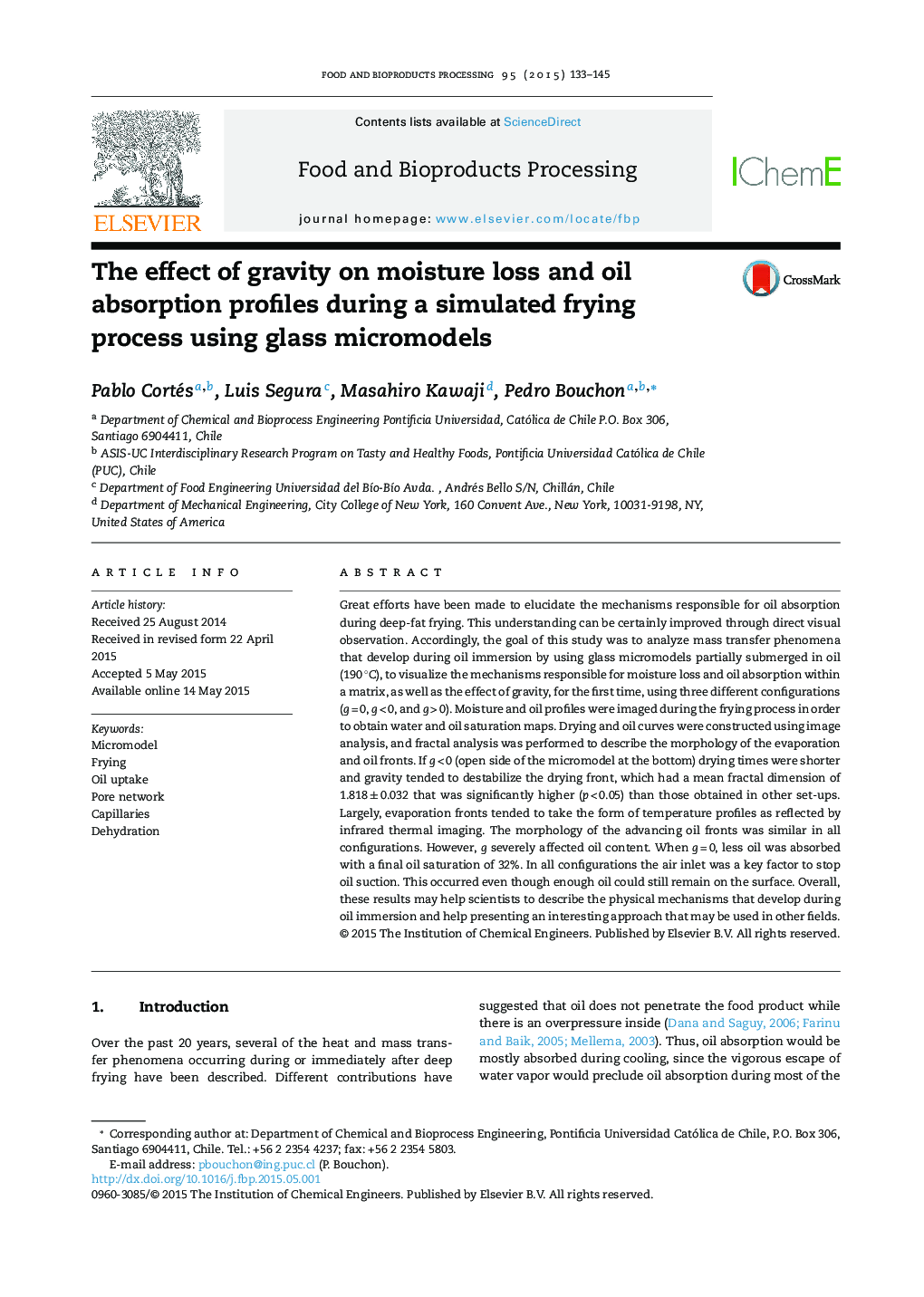| کد مقاله | کد نشریه | سال انتشار | مقاله انگلیسی | نسخه تمام متن |
|---|---|---|---|---|
| 19011 | 43041 | 2015 | 13 صفحه PDF | دانلود رایگان |
• Water loss and oil uptake were studied using micromodels submerged in oil at 190 °C.
• The effect of gravity (g = 0, g < 0, and g > 0) was successfully analyzed.
• If g < 0, drying times were shorter and gravity tended to destabilize the drying front.
• When g = 0, less oil was absorbed.
• In all configurations air inlet was a key factor to stop oil uptake.
Great efforts have been made to elucidate the mechanisms responsible for oil absorption during deep-fat frying. This understanding can be certainly improved through direct visual observation. Accordingly, the goal of this study was to analyze mass transfer phenomena that develop during oil immersion by using glass micromodels partially submerged in oil (190 °C), to visualize the mechanisms responsible for moisture loss and oil absorption within a matrix, as well as the effect of gravity, for the first time, using three different configurations (g = 0, g < 0, and g > 0). Moisture and oil profiles were imaged during the frying process in order to obtain water and oil saturation maps. Drying and oil curves were constructed using image analysis, and fractal analysis was performed to describe the morphology of the evaporation and oil fronts. If g < 0 (open side of the micromodel at the bottom) drying times were shorter and gravity tended to destabilize the drying front, which had a mean fractal dimension of 1.818 ± 0.032 that was significantly higher (p < 0.05) than those obtained in other set-ups. Largely, evaporation fronts tended to take the form of temperature profiles as reflected by infrared thermal imaging. The morphology of the advancing oil fronts was similar in all configurations. However, g severely affected oil content. When g = 0, less oil was absorbed with a final oil saturation of 32%. In all configurations the air inlet was a key factor to stop oil suction. This occurred even though enough oil could still remain on the surface. Overall, these results may help scientists to describe the physical mechanisms that develop during oil immersion and help presenting an interesting approach that may be used in other fields.
Journal: Food and Bioproducts Processing - Volume 95, July 2015, Pages 133–145
